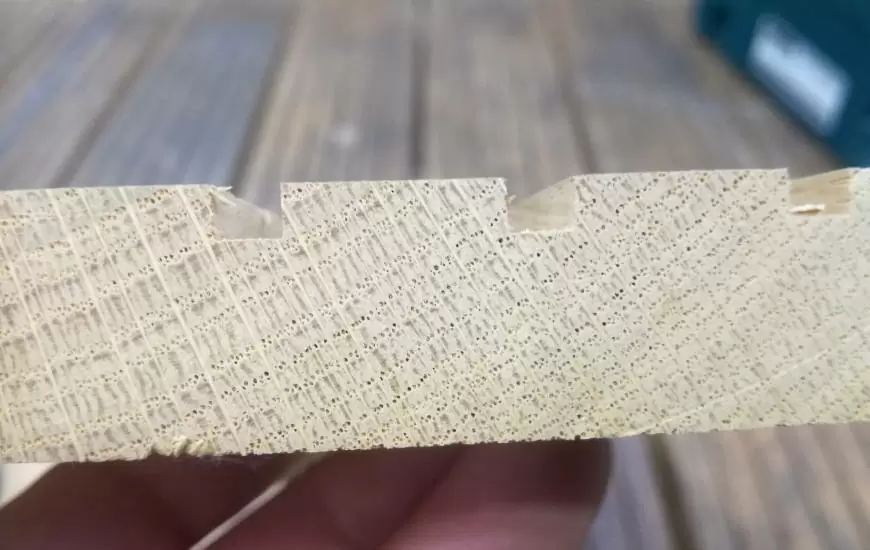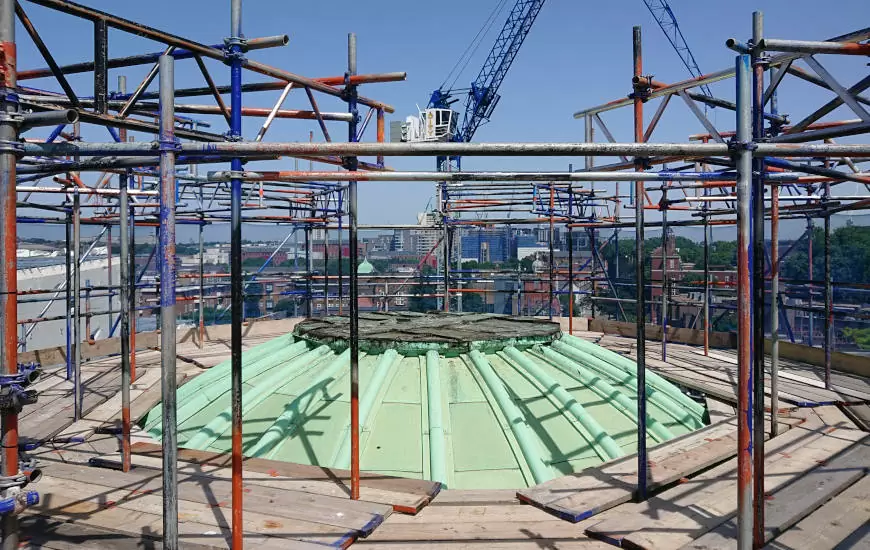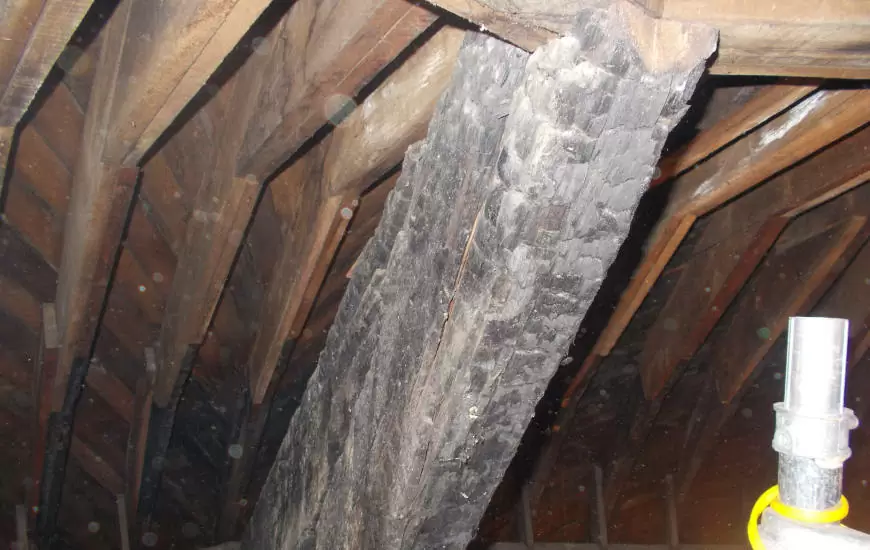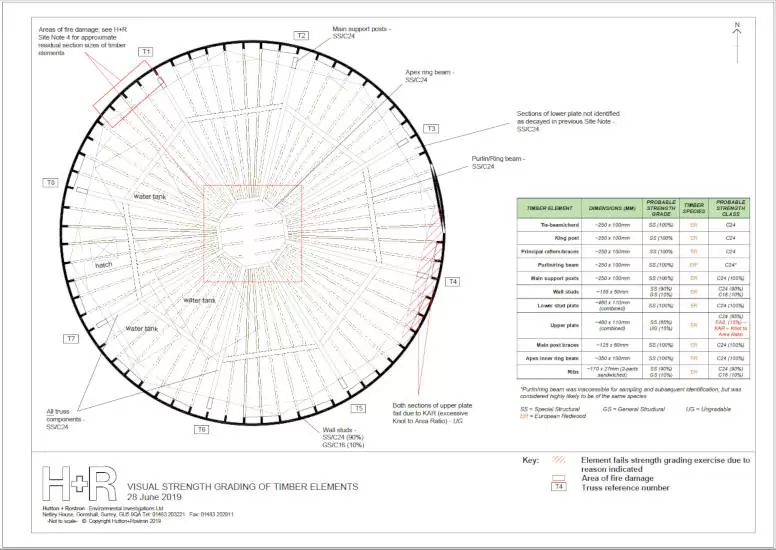In-situ visual strength grading of timber
The Problem
Structural Engineers frequently require confirmation of retained strength of in-situ timbers in order to calculate load bearing capacity on future refurbishment. The exercise involves detailed examination of all the accessible faces of timber elements in order to identify any strength-reducing characteristics. These could include knots, splits, grain deviation, and distortion among others. With softwood timbers, grades of Special Structural (SS), and General Structural (GS) are given which equate to the common strength classes of C24 (SS) and C16 (GS). Temperate hardwood grades are similar to softwood, with strength grades changed to General Structural (TH1 and TH2), and Heavy Structural (THA and THB). The resulting strength classes range from D30 to D70. Tropical hardwoods are classified separately due to the general lack of knots and other strength-reducing features.


The Solution
Of course, different timber species have different strength characteristics, therefore accurate species identification is crucial in order to determine the strength grade and subsequent strength class. This is conducted under a microscope by H+R in laboratory conditions. H+R have a number of staff trained by TRADA in visual strength grading of both softwood and hardwood timbers, and who have also studied timber species identification extensively, including at Kew Gardens.
The timber strength grading exercise places the ‘risk’ in the hands of H+R, and can be a useful benefit to project teams in terms of on-going ‘risk management’ strategies; H+R’s recommendations and findings are welcomed by building warranty providers. Strength grading is often part of more extensive and detailed investigations of timber condition and structural integrity. A recent project in North London involved the reinstatement of a large statue to the top of a timber and copper-clad dome. The Structural Engineer was concerned that the existing timbers would be unable to bear the envisaged future loadings; damage from an historic fire also exacerbated his concerns. Use of a tower scaffold enabled H+R to assess the timbers in detail, and provide strength grades for all of the structural elements, which confirmed the majority were of European redwood (Pinus spp.) and C24 class, and therefore more than adequate for the intended purpose. Fire damaged timbers were also assessed for residual section sizes. All data was presented to the client in report format with tables, CAD overlays, and photographically for ease of interpretation.
Case Study Gallery






